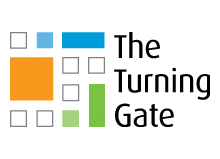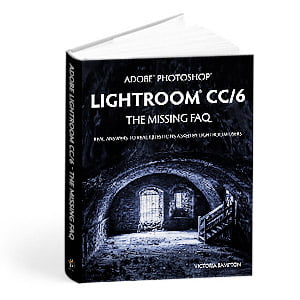There have been several questions in the forum about the best way to go about converting a CE4 site to Backlight. So instead of answering that multiple times, I give you this:
Scenario: you’ve got an existing TTG CE4 site and your albums are Publisher managed. (For a TTG site not using Publisher, see this post.)
Question: How best to replace your existing site with a Backlight site.
Assumptions: You’re currently using CE4 Pages as the basis of your site. At the minimum, you’ve purchased Backlight+Pages and you plan on migrating your existing albums and album sets to Backlight control.
Design your Backlight site
In my opinion, the best practice is to develop your new Backlight-based site in a sub-folder or sub-domain first. Do all your designing in this site. Creating a simple sub-folder is the easiest route. Using your FTP program, log in to the site and create a sub-folder in the root (usually the public_html folder). Name it what you wish, just don’t name it “backlight.” And don’t use spaces or special characters in the name. Letters, numbers, dashes, and underscores only.
If you wish to use a sub-domain, create that in the C-panel of your host (again, don’t name it “backlight”).
Install Backlight in your sub-folder or sub-domain per the Backlight documentation.
In Lightroom, install the Backlight version of Publisher. For Backlight 2, log into Backlight and go the Backlight Modules page. Near the top is a link to download the latest Publisher plug-in. (With Backlight 1, the plug-in comes with your Backlight download.) The new plug-in will take over for the CE4 version. Nothing will change as far as your CE4 site is concerned. You’ll still be able to publish as normal. TTG CE4 Publisher will be inactivated, replace by TTG Publisher.
Set up an instance of Publisher for your development site. Set the API URL to your development site. You can either use a unique API key or use the same one you’re currently using for your CE4 albums.
Start designing your new site. You’ll need to start from scratch as there is no mechanism to move your CE4 design to Backlight. Create all your stand-alone pages including Home, About, Contact, Services, etc. Create your album and album set templates.
Publish an album or two in the development site just so you can see how things are styled.
Implement any customization such as custom css or phplugins if you wish. If any of these contain URLs referring to your sub-folder, you’ll need to remember to change those once you’ve moved the site.
Once you’re satisfied and ready to replace your CE4 site, you can delete any albums and album sets you’ve published in the development site. Do this from Publisher and then check in Backlight > Publisher > Top-level Galleries to confirm that all albums and sets have indeed been removed.
Remove your old CE4 site files
Via FTP delete all your old CE4 files except for the ttg-be/ and galleries/ folder. If you also have a blog, leave that folder too, as well as any special purpose folders you may have created. As a safety measure, it’s a good idea to first download everything to your computer as a backup, just in case. If your site has an existing .htaccess file, be sure to include that in the download just in case there’s something in there you may need for your new site.
I suggest leaving your development site intact for now too. This way you have a test site ready to go in case you want to experiment without risking your main site.
Upload your shiny new Backlight site
Download to your computer everything in your development site folder except the galleries/ folder; you’ll be using your main site’s existing galleries/ folder.
Now upload those same files to the location where your old CE4 files were (typically the root of your site). It’s important that the backlight/ folder be on the same server level as your existing ttg-be/ folder.
Your file structure will look something like this, not including any other folders or files you may have needed to keep:
backlight/
galleries/
ttg-be/
your-development-site/
index.php
.htaccess
Log into the Backlight dashboard in your main site and go to Settings. Change the Site URL and Company URL.
If you also have the Backlight WordPress module, enter the url to your WordPress installation in the Backlight settings WordPress section.
In Lightroom, go to the Publisher instance that controls your existing albums and update the API URL to the new Backlight location (yoursite.com/backlight/publisher). If you set the API key for your development site the same as your original site, then you’re all set. If not, make sure the API keys in Backlight and Lightroom match.
In Backlight > Admin > Special Links, click on Migrate Albums from CE4 to run the migration tool. If you were also using CE4 Cart and have Backlight Cart installed, run the Cart migration tool from the Cart dashboard in Backlight.
See the Backlight documentation for more. (Note that the Backlight documentation directs you to go to the main Backlight Dashboard to run the album migration. That documentation has not yet been updated to include the Special Links page reference.)
Now you can assign the album and album set templates you created in your development site. The quickest way to do this is from the Backlight dashboard. From the menu go to Backlight > Publisher > Top Level Galleries. Click on “Galleries” and on the next page scroll down to Actions. Click on Assign Templates. You can also do this in Lightroom by editing each album and set individually. If you’re a masochist.
Notes and gotchas
DO NOT replace anything in the ttg-be/ folder or alter it in any way. It will no longer be used in your Backlight site, but leave it as is for now since the Backlight migration tool needs it to be in place if you plan on migrating current albums and sets as well as Cart and CRG settings over to Backlight control. Once you’ve done any migrations, you can delete the ttg-be/ folder.
If you’ve uploaded any images such as a masthead graphic, favicon, images for single pages, etc. via the Backlight upload utility, you may find that these images are missing. It’s unlikely, but I’ve had it happen a couple of times during the development and early days of Backlight. This may have been addressed already. At any rate, if you have any missing images, just upload them again and reinsert where needed.
You may find that your image captions and other metadata are no longer appearing in thumbnails and large images. If so, first go to your album template in Backlight and check that the metadata tokens you want to use have been entered. Then you’ll need to republish the metadata for all of your albums. To make this go faster, edit the Lightroom Publisher settings and check the “Push metadata without updating existing photos.”
If you’ve changed thumbnail size in your new template you’ll also need to republish thumbnails. There’s an option for that in Publisher as well.
If you’ve change the size of the large image rendition, you’ll need to completely republish your albums.
That’s it. If you run into any problems, be sure to post those to the TTG Community Forum, where Matt and Ben will be sure to see.


